Caitlin Doughty's Blog, page 33
January 18, 2017
Alkaline Hydrolysis – Seattle Style
Sitting in the upper left corner of the United States, Seattle is, to much of the world, the hinterland of woodsy grunge people who spend their time snowboarding, drinking coffee with tech billionaires, and living the charmed life of people who hike for a living. This may not be entirely accurate, but we do have a fierce loyalty to our pets, specifically our dogs. We have bars for them, we allow them in malls, we hold our dog parks on par with the National Parks. We are also a hotbed of progressive death care.

When it comes to death, we lead the country in embracing cremation as a means of disposition. We have been setting fire to our dead with regularity since the Woodrow Wilson administration and today, we wrangle like greased badgers to climb to the top of the cremation rate. If you can believe it, Seattle cremates 95% of their dead. Unfortunately, we have yet to embrace the new carbon friendlier technology of alkaline hydrolysis (AH), otherwise known as aquamation, or resomation. While other states have adopted this technology for humans, Washington lags. We sit, red faced and left behind, waiting for legislation.
 But we have a beacon showing us the frontier – Resting Waters, Seattle’s brand new pet aquamation service.
But we have a beacon showing us the frontier – Resting Waters, Seattle’s brand new pet aquamation service.
It’s not only Seattle’s newest AH facility, it is the only AH facility in the state PERIOD.
As Order followers, AH is unlikely to be newsworthy, because our readership is the most well-versed in death tech that has ever walked our planet. For those that remain uninitiated in the ways of “the final bath” let me share my fantastic good fortune as I was invited to be privy to the first AH process performed in the state…on anything or anyone.
Joslin and Darci are the owners of Resting Waters. Upon first meeting, you are immediately taken with their amazingly sunny dispositions, quick wit, and deep kindness. Their charismatic charm and business acumen only takes a back seat to their passion for a new standard of death care. A passion that is centered on giving families the same honor and healing for the loss of pawed family members that we afford the two footed ones. We met by chance after someone recognized our shared goals in death care and introduced us, which afforded me one of the highest honors in death care today – I was invited to help them with their first aquamation process.
The AH machine had finished its final permits mere hours before my arrival at their funeral home. Darci came to greet me at my car and, with characteristic directness, opened with “Thanks for coming. She’s on her way here with the dog. We need to move our cars so we can get him close. He’s kinda big.” Alright! Good to meet you, too! Let’s do this!
This machine stands about five feet (1.5 meters) tall and when you look at it, there’s no obvious place to put a body. As you walk around the side, you see that there is a step up to an open top where all the disposition grandeur takes place. A peek inside reveals a deep chamber that has partitions to keep the remains of animals separate for“private” cremations, so as to not co-mingle any of the remains that are left behind. Lest you blanch at the notion that your cat will be in the same process as your neighbor’s irritating dog, let me explain why.
Photo Credit: Ed Peterson Photography
The AH process is that of heating a solution of water and sodium hydroxide (NaOH) or potassium hydroxide (KOH), which breaks down the complex molecules that make up the soft tissue of a body. In most human AH machines, this solution is pressurized and heated well above the boiling point of standard atmosphere. This high pressure/high temperature accelerates the breakdown of these complex molecules to a liquid. What remains are just the bones of the deceased, which is the same result you see with cremation. The process in human machines takes around three hours. Most animal AH machines however, this one included, do not use pressure for the process and thus, the temperatures used in the process are far lower, and that equals a longer processing time. This longer process means that you must perform multiple aquamations in one cycle to make it viable.
BUT – this is NOT group disposition like heaps of animals thrown into a furnace and then scraped out and apportioned. The machine at Resting Waters has separated chambers inside, so that your pet is kept completely segregated from the other pets in that cycle. What remains is the little skeleton in your pet’s little temporary room, so to speak, and they are then taken out individually, processed, and put into the urn. The water at the end of the cycle then gets discharged into the sanitary system like all other waste water. I would like to take a moment to explain that the liquid that is discharged is nutrient rich and safe enough to use in the garden for all of your vegetables. In cremation, all the tissues and liquid are vented up the chimney in the form of particulates and steam. In the both cremation and AH, what is returned to the family is simply bone and trace materials.
Photo Credit: Ed Peterson Photography
The reputation of Resting Waters preceded them even before the opening of the business. The first guest of honor was brought to them months prior to the machine even being delivered, let alone functional. They invested in a freezer and he was put into cold storage (most dead things – people and pets – are refrigerated, not frozen). Joslin showed up with the frozen block-o-bowser and we set to getting him ready for his last bath.
The process was remarkably simple. The machine has a very straight-forward control panel with a booklet that gives you the ratios of NaOH to KOH for the weight of the animal that you are going to be “bathing” (I’m making up terms as I go here folks. This is so new, we haven’t even really come up with a familiar parlance yet).
The author, Jeff with Joslin and Darci
We weighed out the chemicals in accordance with his weight, set the partitions in the chamber to hold the old boy in, lifted him into the chamber, and placed the chemicals in on top of him. With a simple close of the lid and a few pokes at the touch screen, Bowser was off on his way. The process was almost silent and was completed with no notable fanfare.
The next day, a jubilant pair of pet funeral directors texted me a picture of the remains, and I must say, it brought me a great deal of joy as well. It was a wonderful passage for someone’s beloved pet, and a true honor to be invited to the first time in Washington State history that a funeral home has used alkaline hydrolysis as a disposition. It’s a brave new day for our profession, and I’m incredibly proud to have seen a little tiny part of it with these remarkable women.
Order member, Jeff Jorgenson worked for years in the corporate funeral industry in Seattle, doing everything from pre-need sales to cemetery management. Fed up with how the death industry maintained outdated traditions, he struck out on his own, founding the Pacific Northwest’s first eco-friendly funeral home, Elemental Cremation and Burial . Elemental specializes in carbon neutral cremation & green burials.
January 12, 2017
Victorian STANDING Corpse Photographs?
January 10, 2017
Dying Trans: Preserving Identity in Death
Jennifer Gable died in October 2014 at the age of 32, from an unexpected aneurysm. When her friends attended her funeral, they were outraged to see that she was displayed in the casket wearing a man’s suit, no makeup, and her hair had been cut. At no point during the service was her female identity even mentioned.
Jennifer Gable
Jennifer was a transgender woman who had legally changed her name in 2007. She had been living and working as a woman for years, and had cultivated a community who knew her and loved her as the woman she was.
The funeral home’s website
The funeral director was quoted in the media saying that he’d done what he was legally bound to do, and was honoring the wishes of the next of kin, despite Gable’s legal name change. And he was right. Funeral arrangements fell to her father, from whom she was estranged.
Christopher Lee was a transgender man who died in 2012 at the age of 48. He was well-known in the trans community as an activist, and was the cofounder of the Transgender Film Festival. He had been living as male for 20 years, and had a driver’s license that matched that identity.
After he was cremated, his best friend, Chino Lee Scott-Chung, picked up his ashes and discovered that Lee’s death certificate listed him as a female named “Kristina” (his deadname). Scott-Chung has said, “Christopher lived his life in all ways as a man for almost 20 years…. Misgendering his death certificate erased his history and hard-won identity.”
The outcry over the misgendering of Christopher Lee was the catalyst that resulted in the changing of the law in California on July 1, 2015. The Respect After Death Act, drafted by Speaker of the Assembly Toni Atkins and signed into law by California governor Jerry Brown, allows for the recording of gender identity on a death certificate rather than the sex assigned at birth if an updated driver’s license, a court order approving a name or gender change, a passport, or an advance directive, among other documents, are provided.
Christopher Lee
Masen Davis, executive director of the Transgender Law Center, which sponsored the bill, has said, “Gender identity represents a core part of who we are as people, and this identity should be recognized even upon our deaths. When a loved one is not honored as their authentic self upon their passing it is extremely painful for the family, friends, and community.”
In October 2015, D.C. Council member Mary Cheh introduced The Death Certificate Gender Identity Recognition Amendment Act of 2015 in Washington D. C. If passed, this would serve the same purpose for the D.C. trans community as California’s Respect After Death Act and, in addition, protects the person filling out the death certificate for any liability for how the decedent’s sex is recorded.
FUNERAL DIRECTOR PERSPECTIVES
Jeff Jorgenson of Elemental Cremation & Burial in Seattle said that there was nothing in his funeral-director education that specifically addressed gender identity. He also emphasized that the family, not the deceased, is the client of the funeral home. He can act only with the wishes of the person who has the right of disposition, he explained, “We cannot present a person who identifies as female as a female if the family doesn’t wish it…. The family could want them dressed in a Wookiee suit riding on a plastic carnival unicorn, and we would oblige, assuming they paid accordingly.”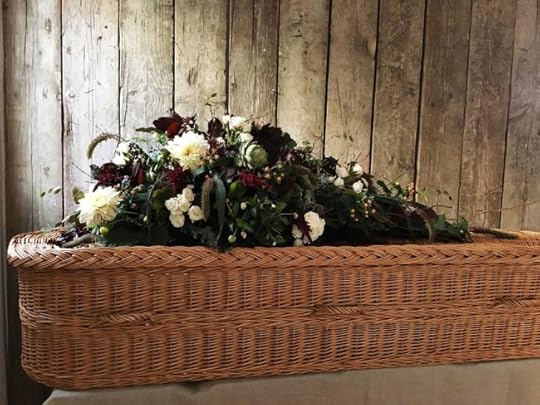
Sarah Wambold, an Austin funeral director and green-burial expert, echoes that thought. Without any plans set in place by the deceased, the family gets whatever they want. She does add, however, that “exploring what is uncomfortable to accept with the family allows for a really personal discussion that they don’t get a chance to have anywhere else. It can be really cathartic and an important step for them in their grieving.”
Sixth-generation funeral director Caleb Wilde is known for his popular blog Confessions of a Funeral Director, on which he’s stated, in the context of LGBT rights, “I believe that those who love us in life should be the ones who take care of us in death.” He never received any gender-identification training, also pointing out that most funeral directors serve the 60-to-90-year old demographic. He said, “It’s safe to say that the funeral industry is about 20 to 30 years behind today’s cultural concerns, and so is its mortuary training.”
TRANS PERSPECTIVES
Some transgender folk were asked if they were aware of what they can do to make sure this doesn’t happen to them. Rachel, a Wisconsin transwoman, said she’s not aware of anything she could do to ensure her gender is honored after her death other than rely on her wife to make respectful arrangements.
Rachel’s wife is Helen Boyd, an author and lecturer in gender studies. When asked if they’d taken any steps to ensure that Rachel would have the appropriate death certificate and funeral someday, Boyd replied, “We’re unaware there are any, besides getting wills, which we don’t have.”
It’s a common misconception that any wishes about a funeral should go in a will. But Joshua Slocum, executive director of the Funeral Consumer’s Alliance, says, “A will is not the place for your funeral wishes. It’s often not read or accessible until after the burial. Never rely on a will for anything to do with body disposition.”
Devon, a Long Island transman, said he’s not aware of anything he could do, aside from rely on his sister and partner to do the right thing.
Despite not having taken any steps, Devon is passionate about the topic, adding, “For someone who is trans, their life experience is that of the trans experience, which is pivotal to who they are. People are being killed because they are trans; people are killing themselves because they are trans. To erase who someone is by not acknowledging that they are trans is erasing who they are, what roads they’ve traveled. Silencing their presence is an act of violence not only on the individual, but on the community as a whole.”
Devon’s partner is Tawni J. Engel, assistant director at Pride for Youth Crisis Center, serving the Long Island LGBT community. Devon chooses to keep his birth certificate and driver’s license marked as female as a political statement, which could cause misgendering issues in the event of his death. Imaging how it would be if, after his death, Devon were displayed as a woman, or his death certificate was marked female, Engel answered, “I would be horrified and sick to my stomach because I know how mortified he would be.”
Elizabeth Kneissel, a Brooklyn transwoman, said that she has given thought to her gender being an issue after her death, and that she was concerned about it. She said she hopes she still has time to figure it out, and also is confident her wife would make sure it was all done correctly.
This was a common theme in all the conversations: assuming they would die before their partners who would handle the arrangements, and also knowing they should do something, but not sure what.
WHAT CAN BE DONE
One available legal document is an advance directive, which is actually two main documents: a living will, which contains instructions about medical care, and a medical power of attorney (or health-care proxy) in which you can appoint a person to make medical decisions upon your behalf.

The Transgender Law Center offers a document that is transgender-specific on their website, meaning that it contains sections not included on most living wills. This allows you to “make clear what name and pronouns should be used for you if you become incapacitated and how you want to be dressed and groomed in a hospital, assisted-living facility, or funeral home. Making your wishes clear prevents any confusion and inhibits a family member from making a decision that is not in your best interest.” They also point out that “even the most well-meaning health-care providers or funeral directors may not be able to consider the advice of a close friend … the same is true of someone you are dating or living with if they are not your spouse or domestic partner.” As an added safeguard, they include a section called “People That Should Have No Authority” where you can list those you don’t want to make medical decisions for you.
According to Lambda Legal, however, only some states allow you to empower the health-care proxy to make funeral-related decisions. And Brooklyn funeral director Amy Cunningham emphasizes, “Power of Attorney, which is often the main feature of an advance directive, expires at death. So if the domestic partner has Power of Attorney, parents could still conceivably barge in and take charge of the funeral.”
Poul Lemasters, funeral director, embalmer, lawyer, and advisor to the International Cemetery, Cremation, and Funeral Association, who specializes in legal counsel to the death-care industry, believes that another problem with advance directives is that people often don’t get specific enough when they fill them out, and can sometimes be tripped up by how extensive they are.
So, while advance directives may be the answer for some, particularly about medical decisions, they may not be the ideal solution for trans people wanting to make sure they are not misgendered after their deaths.
Cunningham strongly recommends the lesser-known Appointment of Agent to Control Disposition of Remains form over an advance directive. Funeral Director Caleb Wilde agrees, saying, “If a trans person doesn’t trust their family and friends to honor their identity, they should find someone they do trust and appoint them as their ‘funeral agent.’”

The Funeral Consumers Alliance has a detailed state-by-state list regarding Personal Preference Laws for Body Disposition, which indicates that most states will honor that form to appoint someone other than a spouse or the next-of-kin to make decisions about your body disposition and funeral arrangements. The rights of the funeral agent supersede the rights of all others, including the spouse and other relatives such as children and parents. This is where specific instructions about a viewing, makeup and dress preferences, and specific funeral home and cemetery could be added. It’s a lot shorter and less complicated than an advance directive, so people overwhelmed by those might be more likely to actually tackle this form.
Poul Lemasters also believes the appointment of agent form is the best choice for this situation, and he’s written them up for every state in his law practice. After learning about the posthumous misgendering of Jennifer Gable and Christopher Lee, Lemasters revised his appointment of agent forms for each state to add some language to make the power of the agent broader and more clearly defined regarding the planning of funeral arrangements and providing information for death certificates. He emphasized that if Jennifer Gable had had one of these, her father would not have been able to intrude on the arrangements.
It’s not right that after fighting for the recognition of their authentic gender in life, that a transperson’s identity be denied in death. A funeral should be an emphatic punctuation mark for a life authentically lived, a way for communities to celebrate and honor someone — not an erasure of what was fought for. If this final indignity can be avoided by filling out a simple form, then everyone should do this to help ensure that your body disposition and funeral is handled properly, and that your loved ones and chosen community can honor your passing in a way that’s appropriate and respectful of the life lived.
Links:
LemastersConsulting.com. (Use promo code DEATHSALON to get his Appointment of Agent forms for free.)
Death Certificate Gender Identity Recognition Amendment Act of 2015
Transgender Law Center End of Life Documents
Christine Colby is a New York City–based writer and editor and is the managing editor of Investigation Discovery‘s true-crime site, CrimeFeed.com. Other bylines include Penthouse magazine, Fangoria magazine, Refinery 29, Noisey, Broadly, mental_floss, and Hyperallergic. She has been a speaker at Death Salon L.A. and Death Salon Mütter Museum. In January 2017, she is launching a regular column on LifeHacker.com called DeathHacker: Helping People Die Their Very Best Deaths.
January 6, 2017
Ask A Mortician – Backyard Burial, Cannibalism, & More!
January 3, 2017
Death and STUFF
This article is the second thing I’ve written today. The other was my will.
After meeting Caitlin and devouring her work, I’ve decided to come to terms with my pending decomposition. As much as I’d like to live forever, bopping back and forth between Big Bang and Big Crunch in an eternal game of ping-pong, it’s obviously not going to happen. All roads lead to Wormsville.
I wrote a will as part of this acceptance journey, but I also wrote it because I’m a minimalist and feel unusually responsible for the destiny of my stuff. A decade of purging and vigilance against accumulation has given me a heightened sense of responsibility, even affection, for the few things I own. In accepting death, a first thought was what will happen to my stuff? but, of course, I already knew the answer and had been preparing for it, through minimalism, all along.
All of your stuff–much like yourself, madam–is destined for landfill. It’s a fact of death that our once-treasured possessions will be ditched unceremoniously. Your sci-fi paperbacks will not be gently escorted to the Library of Congress and shelved with a little plaque with your name on it. Your record collection will not be sealed into the tomb with you. You’re not Tutankhamun. You’re not even Nefertiti.
Our stuff is unlikely to be used or valued by descendants. They’ll see it as a nuisance and want rid of it as quickly as possible because they already have too much stuff without inheriting ours. They’ll probably handle some of it affectionately and say “silly old gran,” before selling it off in one big lot to a clearance company or booting it into a bin.
Maybe you don’t mind what you leave behind or the state in which you leave the world once you’re dead. To have people clean up after you while you’re shaking hands with Elvis may be every human’s prerogative, a form of palliative care to which we’re all entitled. But to me it seems mean-spirited to make things difficult for the life-laundry fairies by leaving them as big a cache of junk to tackle as possible. It should be seen as embarrassing to die with so much stuff in one’s possession: it’s a case “sorry I didn’t tidy up before you got here” times a million.
Inanimate objects will not, in any meaningful way, survive us. It took me a while to notice but minimalism is strongly tied to death acceptance. Acquisition is death denial. To acquire is to fortify yourself, expand yourself, make yourself unmovable, unwashawayable. To accumulate is to live as if you’re not going to die. To have a house full of stuff, a storage unit full of more stuff, and a room at your mum’s house also full of your stuff is to live as if you’ve got an eternity to sort it all out or to use it all. We don’t. You’re all going to slip on a bathmat one day and smack your head off the wash basin, your final thought being “hope I don’t slip on that bathmat and smack my head off the wash basin”.
Death deniers, those who won’t come to terms with their glorious finity, will also spend time and money on youth potions, midlifecrisismobiles, endless distractions from mortality. They treasure their so-called investment pieces, sitting around on their trash heap of perceived wealth like a CGI dragon voiced by Benedict Cumberbatch. Those who truly accept death know they don’t need any of this and instead live lightly, understanding that no amount of physical stuff will cancel their date with Bowie.
Accept death, to prepare for it, and in doing so get on with life. A fine way of doing this is to pare down your stuff and not replace it. Then you can get on with having real experiences instead of shopping and stacking things on top of one another. This sort of purge is respectful of your stuff too: you can say goodbye to each object properly while you’re still alive instead of leaving it bereaved.
The benefits of minimalism cannot be overstated. It’s good for the environment (reduction being the most overlooked of “the three Rs” and the only one that really matters), for aesthetics, your health, your mental wellbeing, your way of life, and your wallet. And as I learned only recently, it’s not only good for your life but also your death.
I’m off to visit some friends now to have them witness the signing of my will. They’re minimalists too, so they’ll be delighted when I ring their doorbell, brandishing the paperwork confirming that I’ll leave them nothing.
Robert Wringham is an author and comedian. Support his new essay series on Patreon.
December 15, 2016
Morbid Minute: The Punished Suicide
December 8, 2016
THE $11,500 CASKET SCAM
December 7, 2016
New Fetal Regulations in Texas: The Good (and Very Bad) News
Fortunately, our members include Tanya Marsh, the country’s leading expert on funeral and cemetery law, and Sarah Wambold, a Texas funeral director that has been following the development of these regulations for months. They’ve helped me created a list of some truths (both good news and bad news) about the Texas regulations.
1. The Texas regulations DO NOT redefine fetal tissue as human remains.
This is important. In Texas, fetal tissue (from a medical abortion or miscarriage) is still defined as special, or medical waste.
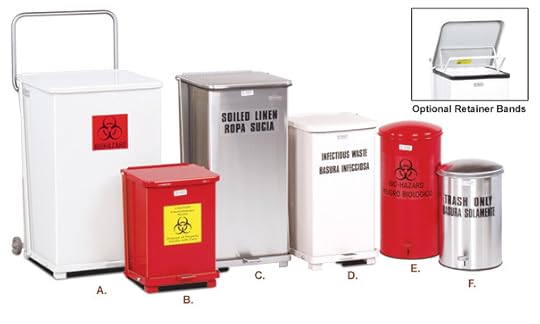 The administrative agency that made these new regulations is the Texas Department of State Health Services. They don’t have the power to change the law or change the definition of medical waste. Only the legislature has that power. All the Department can do is create and amend regulations within the authority expressly given to them by the legislature. What they did here is very limited. They are moving in circles within their tiny administrative box.
The administrative agency that made these new regulations is the Texas Department of State Health Services. They don’t have the power to change the law or change the definition of medical waste. Only the legislature has that power. All the Department can do is create and amend regulations within the authority expressly given to them by the legislature. What they did here is very limited. They are moving in circles within their tiny administrative box.
2. The Texas regulations DO NOT require cremation or burial of the fetal tissue.
This is the main fear many of us had when we heard about the new regulations, especially given the news headlines. The worry that when abortions and miscarriages occur at healthcare facilities, the tissue would have to be treated as human remains or as a “baby,” going through disposal like any adult body would.
In reality, here are the new choices in Texas for the disposal of fetal tissue: cremation, incineration followed by interment, steam disinfection followed by interment, or interment.
What’s missing here? The list used to include a few more options for the fetal tissue to be disinfected and then go into sanitary landfill or sanitary sewer system, like other kinds of medical waste. Most hospitals and other healthcare companies hired licensed medical waste companies to come collect the tissue, disinfect it, and sent it to landfills.
Removing those options is the major change in how things will be handled In Texas.
But, that doesn’t mean the fetal tissue has to be buried in a grave at a cemetery or cremated by a funeral home.
3. The Texas regulations DO NOT require the participation of the funeral industry.
Let’s remember, in Texas, fetal tissue is still medical waste. The amended regulations haven’t changed that definition. Fetal tissue is not human remains. And funeral homes are only designed to dispose of human remains.
Ready for something to blow your mind? The amended regulations include “cremation” and “burial” of the fetal tissue, but since there is no connection to the Texas statutes regarding human remains, those words do not mean what you think they mean!
The regulations don’t define “burial,” which means that with regards to fetal tissue and medical waste, “burial” can just mean putting something in the ground. A cemetery is not required.
The regulations do define “cremation” but don’t link it to the statutes regarding human remains, so with regards to fetal tissue and medical waste, “cremation” can just mean reducing the tissue through extreme heat. This can just be done in a medical waste incinerator, no funeral home or crematory required.
And, it’s still legal to co-mingle what is leftover after incineration or cremation of fetal tissue. Nothing in the regulations requires individual incinerations, cremations, or burial plots.
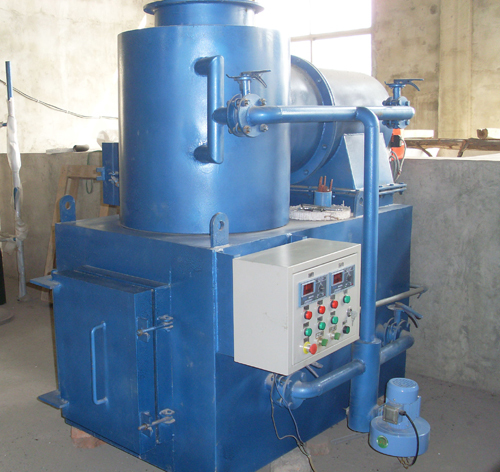
A medical waste incinerator
4. The Texas regulations DO NOT require any action on the part of the woman.
Hospitals and medical clinics handled medical waste before, and they still handle it now. The women are not involved.
5. Indiana’s law is much worse.
Here’s where the news gets bad. Everything that people are afraid Texas did, Indiana actually did earlier this year.
In Indiana, we’re not dealing with a regulation, we’re dealing with a law, passed by the legislature. (And pushed through by your new vice president elect, Mike Pence.) Indiana did actually take fetal tissue and changed its category to “human remains.” This is transparently an anti-abortion statute although the law in Indiana applies to both “aborted fetuses” and “miscarried fetuses.”
The problem with that change is that we have the same definition (“human remains”) for a “fetus” of one-week gestation as we do for a 200 pound, 65 year old adult.
By the new Indiana law, within 24 hours, the healthcare center has to give the woman a written form saying she has the right to take the remains to a funeral home. Planned Parenthood filed a federal lawsuit and got a temporary restraining order with respect to the part of the law that has to do with “aborted fetuses.” But the law regarding “miscarried fetuses” went into effect on July 1st. Indiana hospitals are currently requiring women who suffered a miscarriage before 20 weeks to sign a form that refers to “my baby’s body” multiple times. Nurses have been obviously horrified to give out this new form to woman, but the law requires them to do so. As Tanya said, the Indiana law is “impractical, absurd, and paternalistic.”
If the woman does not want the “remains,” the healthcare centers have to have them buried or cremated. They are allowed to co-mingle, but they do have to deal directly with a cemetery and/or funeral home which is more expensive than dealing with a medical waste company.
It’s worth noting that Georgia also has very bad laws in this category. Worse than Texas, but not as bad as Indiana. Nobody comes close to how bad Indiana is.
6. Texas still isn’t a good sign.
Texas regulations are just regulations, but this is not to say Texas won’t come back to the legislature and try to follow Indiana’s example, and that’s what we have to watch for.
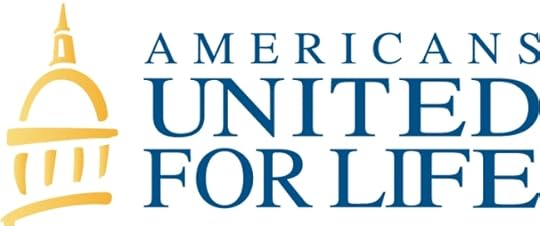
The bad guys.
Americans United for Life (a pro-life law firm and advocacy group) has drafted model legislation called the “Unborn Infants Dignity Act” and is pushing it to the state legislatures. Alabama and Idaho passed the Act this year. Portions of the Act were introduced in another 12 states. The language contained in the Act is awful, but still not as bad as Indiana (are you sensing a pattern here?) The proposed laws says that “deceased unborn infants deserve the same respect and dignity as other human beings.” We can look forward to some states proposing laws and constitutional amendments stating that personhood begins at conception and therefore all fetal remains are human remains. Case in point: the Ohio legislature unexpectedly passed a law this week outlawing abortions after a fetal heartbeat can be detected. The main proponent of the bill (which two federal courts have already said is unconstitutional) explained that they pushed for the law because “it’s a brand-new day with a Trump-appointed Supreme Court.”
We don’t want more states to re-define fetal tissue and medical waste as human remains. This is a dangerous slippery slope, essentially stating that human life begins at conception and we are going to start treating cells that could potentially develop into humans like humans, involving funeral homes where they should not be, and restricting a woman’s right to choose.
We will be working on having more resources available to you soon, such as a state-by-state breakdown of these laws.
Until then, some excellent final words from Sarah: “Take care of yourself. The biggest weapon Texas is currently wielding is psychological. By using language to prime us to think of medical waste as human and sanitary landfills as disrespectful, they are banking on the emotions of citizens to push through more harmful laws. It is imperative going forward that you practice radical death acceptance. Meditate on the process by which remains are disposed of and accept that even though it may not appear pleasant, that does not make it wrong, harmful or disrespectful.
New Fetal Regulations in Texas: The Good (and Very Bad) News
December 2, 2016
CALENDAR OF EVENTS – WINTER 2016-17
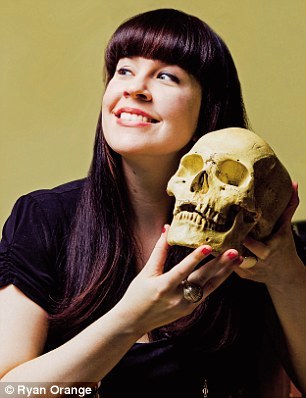 CAITLIN DOUGHTY
CAITLIN DOUGHTYTEDMED, November 30th – December 2nd, Palm Springs.
Duke University, February 25th, Durham, NC. Details TBA.
Journal of Law and Policy symposium on Disrupting the Death Care Paradigm, Feb. 23-24 in Winston Salem, North Carolina.
UNDERTAKING LA

SAVE THE DATE! Undertaking LA morticians Caitlin Doughty and Amber Carvaly will be hosting their first workshop on January 15th in Los Angeles. If you are interested in attending please sign up for the Undertaking LA mailing list by following the instructions outlined here. Further details TBA.
 DEATH SALON
DEATH SALONOur next Death Salon will take place in Seattle, September 8-10, 2017. To be notified of programming, ticket sales and updates visit the Death Salon website or sign up for our mailing list.

Urban Death Project
ORDER OF THE GOOD DEATH MEMBERS
Katrina Spade will be participating in Rot: Compost Vs. Surgery on December 3rd in Seattle, and on January 26th Atlas Obscura will be hosting an evening with Katrina, on her Urban Death Project.
Dr. Paul Koundounaris will be discussing Sex Ghosts & Sicilian Catacombs at the Wagner Free Institute of Science on December 9th for an evening on The Carnal and the Mortal.
Nora Menkin of People’s Memorial will be holding an end of life planning workshop, Got Your Ducks in a Row? on December 11th in Seattle.
Cassandra Yonder‘s online course in Community Deathcare will begin in in January. Course details and registration here.
DEATH SPACES RUN BY ORDER OF THE GOOD DEATH MEMBERS
The following institutions are run by members of The Order and offer a full calendar year of death positive events that are open to the public.
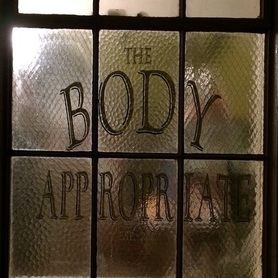 The Body Appropriate, located in San Francisco, is run by Order Member Stephanie Stewart-Bailey. The Body Appropriate often features Sound Public Dissections, Visceral Cinema and more. Check the out the entire schedule here.
The Body Appropriate, located in San Francisco, is run by Order Member Stephanie Stewart-Bailey. The Body Appropriate often features Sound Public Dissections, Visceral Cinema and more. Check the out the entire schedule here.
 Join Barts Pathology Museum’s Technical Curator, Carla Valentine for an incredible array of events inside a stunning Victorian pathology museum in London. Taxidermy classes, potting workshops and an array of fascinating lectures await you. Check the official calendar of events here.
Join Barts Pathology Museum’s Technical Curator, Carla Valentine for an incredible array of events inside a stunning Victorian pathology museum in London. Taxidermy classes, potting workshops and an array of fascinating lectures await you. Check the official calendar of events here. Joanna Ebenstein’s incomparable Morbid Anatomy Museum in Brooklyn should be on every Deathling’s bucket list. In addition to visiting the museum you can catch any number of workshops, field trips, lectures and unique events. Visit their website for a full listing.
Joanna Ebenstein’s incomparable Morbid Anatomy Museum in Brooklyn should be on every Deathling’s bucket list. In addition to visiting the museum you can catch any number of workshops, field trips, lectures and unique events. Visit their website for a full listing.
OTHER DEATH POSITIVE EVENTS
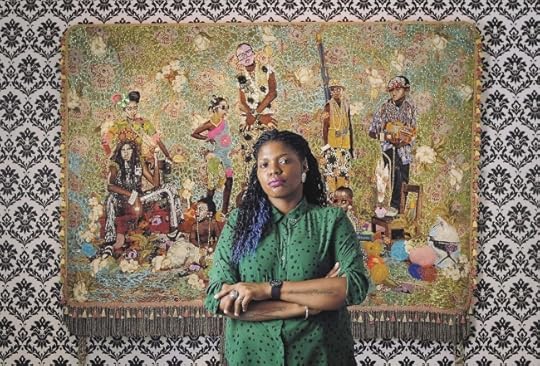
Securing the Shadow: Posthumous Portraiture in America, an exhibition dedicated to an examination of American self-taught portraiture of the 18th and 19th centuries through the lens of memory and loss. October 2016 – February 2017, NYC.
Ebony G. Patterson exhibit, If We Must Die… at the SCAD Museum of Art in Savannah, Georgia through January 1st.
The Kaidan Project will include community engagement events examining the traditional ghost stories that were told to train samurai to help them face their fears of death, through a modern lens and will feature puppet, mask and traditional folk art workshops.
A Traditional Krampus Play featuring the Krampus, Lucifer, butchered children, and the inexorable power of Death. Catch it in Los Angeles on December 11th.
A Will For the Woods screening on December 6th in Boothbay, ME.
Melbourne Cemetery Tour on December 9th in Parkville, Vic.
DED Talks – Ideas Worth Burying hosted by the Science Showoff talent Factory on December 6th in London.
Dying Matters Awareness Week Launch will take place on January 23rd in London.
November 22, 2016
Ask A Mortician – LEAST EXPENSIVE DEATH OPTION
Caitlin Doughty's Blog
- Caitlin Doughty's profile
- 8410 followers



